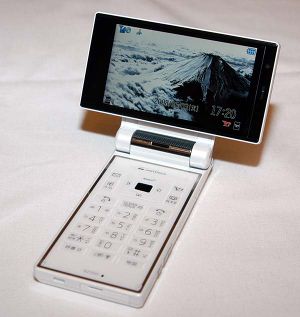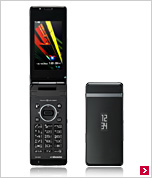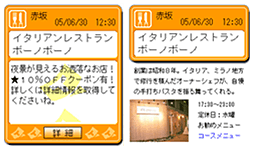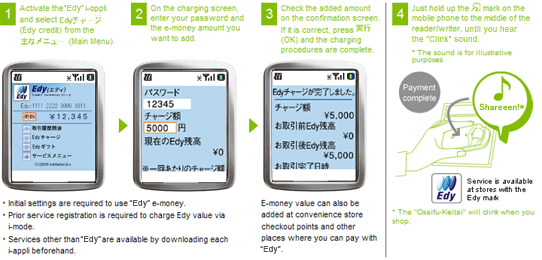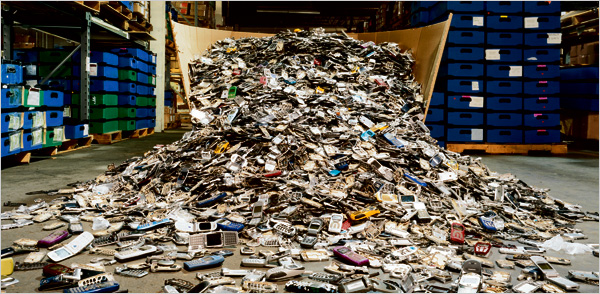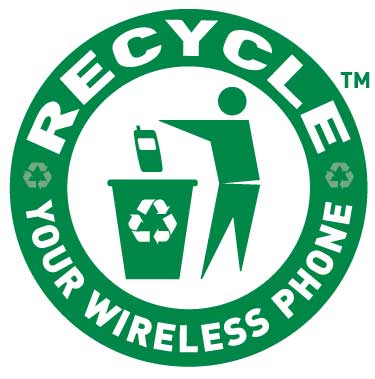Courses/Computer Science/CPSC 203/CPSC 203 Template/CPSC203 Template People/James King/Group 2
Cell Phones - Hell Phones
Contents
Group Members
• Monique Ames
• Clement Chan
• Adrian Gaska
• Katya Hladka
• Aaron Peterson
Issue Introduction
Cellular phone technology is advancing at an alarming rate as phone performance is continuously updated to achieve increased amounts of capability. Everyday cell phones come out with new features that are set out to make our lives easier by doing more for us. Today cell phones are so advanced that they are relied on for almost everything including communication, keeping track of contacts, paying for goods, and doing our banking. Unfortunately, relying so much on one piece of technology is dangerous and harmful to our health, social relationships, and environment.
History of the Cell Phone
The first Cell Phone was shown to public as the prototype called the Motorola DynaTac. It was shown in the streets of New York. It was a slow start to the use of cell phones. It took ten years to get the DynaTAC on the market, and once it did, it cost $3500 dollars. It also took nearly 7 years to reach one million subscribers. But by 2007 it is reported the over 3.3 billion people have cell phone subscription. Which is about half of the world.
Internet connection, like the cell phone was a new technology that also took off in the 90’s. As our cell phone it too has expanded its users and has become a major part of life. Now that we have two and two together, with the freedom of a small pocket size cell phone, our dependency on this device has sky rocketed. Not to mention countries such as Japan, that are using their cell phones as credit cards, where merchants can scan the face of their cell phone screen and they are off!
Modern Cell Phone Features
• Instant message sms
• Camera phone allowing take pictures and/or make videos
• Phone and address books
• Alarm clocks and stopwatches
• Portable music player (MP3)
• Portable video player (MP4)
• Touch-pad system
• GPS navigation system
• Calculator, calendar, schedule note and memo pad
• Daytimers
• Mobile games
• Video calling
• Watching TV or movies
• Listening to radio
• Fingerprint/face certification system for the protection of personal data
• Bluetooth
• Crime prevention buzzer (with the automatic reporting system to the police)
• Recording sounds and voices
Trend in Mobile Payments
Currently, there is a trend of using the phone for payment. These cell phones function as an electronic wallet. Vendors in Europe including RingGo, Easy Park, NOW! Innovations, Park-Line, mPark and ParkMagic use contactless payment over mobile phones to pay for on- and off-street parking in specially demarcated areas. Most US major card brands are testing mobile payments in Chicago and Salt Lake City, which like other types of contactless payments incorporate radio frequency identification (RFID) chips to identify the user’s phone and account numbers. One of the major credit card company, MasterCard, selected using Near Field Communications (NFC), which enabled mobile phones to make card payments. NFC is a new, short-range wireless technology based on RFID, which works by magnetic induction. Using this technology is said to slash the time it takes to complete a transaction. Studies from MasterCard suggest tap-and-go payments take 12.5 seconds less than traditional card transactions.
Mobile payment can be categorized into 2 types, a merchant based and cardholder based. For the merchant focused, the transaction is entered and completed by the Merchant (or their representative). This is similar to Mobile EFTPOS except it is processed via a mobile phone/device.
For the cardholder based, when the Cardholder makes a mobile payment, the card is being connected to a server via the mobile device to perform authentication and authorization, and subsequently being presented with confirmation of the completed transaction. Extensions to this include Near Field Communications or Contactless Payment options using a mobile phone/device.
FeliCa
Felica is an acronym of Felicity Card. It is a contactless Radio-frequency identification (RFID) Integrated Circuit (IC) chip smart card system which is developed by Sony. The majority function used from this card is for electronic money cards. Other than using as mean of electronic money, it is also used in different ways. This technology makes use of a RFID chip inside the handset that can communicate with reading devices when the phone is placed near them. Although the technology is relatively new, there are many locations such as convenience stores which allow users to pay for goods using their phones; some vending machines even accept phone payments. Users must 'charge up' their accounts with credits before they can pay using their phones. The growing popularity of the system is compelling other manufacturers to make compatible phones. In Japan, phones integrated with this kind of technology has already been widely used. One of the phone services used is called "Osaifu-Keitai".Osaifu-Keitai
In Japan, mobile payment has already been widely used. The first mobile payment system was first introduced in 2004 called "Osaifu-Keitai". "Osaifu-Keitai" literally means "wallet mobile". Currently, Osaifu-Keitai has services including electronic money, identity card, loyalty card (membership card), fare collections of public transit (buses, railways and airplanes, credit card, coupons, keycard. This card can automatically recharge itself via the Internet, or provide the latest information froms shops about promotions or coupons. This card can also be used as a ticket for an airplane or an event, by downloading an electronic ticket from the internet. This system has been the "de facto standard" in Japan, which means that this systems is also supported by other different mobile phone operators. Some services provided by Osaifu-Keitai are Mobile Suica, iD payment service, ToruCa and Edy.
Mobile Suica
This is a service from the Osaifu-Keitai mobile phones. It has already been launched for 2 years. It is a prepaid recharge contactless smart card that functions mainly for paying in participating stores, vending machines and websites. Also, it is the only service that can be used to pay fares on the JR railway network.
iD payment Service
This is a secured credit card service which enables you to shop or withdraw cash by simply holding up the "Osaifu-Keitai" phone above the card reader device when paying. Advantages for this service is that individuals don't need to carry credit cards or sign signatures.
ToruCa
This is another service from the Osaifu-Keitai system. Its function is to dwnload bits of useful information onto mobile phone such as restaurant flyers, and promotional coupons - just like the paper-based cards distributed at restaurants, etc.
Edy
Edy stands for Euro, dollar and yen. But this technology only works for yen. It has similar function as Mobile Suica, which uses Felica technology. Its primary function works as an electronic money card. Below is a sample instruction using Edy on your moblile phone.
Social Issues
Contacts Lists
Rapidly advancing phone technology is reshaping societies lexicon as well as means of interacting. A good example of how dependent people are on new technology is the contacts feature many phone have. Years ago one would have to memorize a person’s phone number or look it up in a phone book. Now a quick search in your phone's contacts list will do, some phones are even able to recognise the contact and dial their number when their name is said into the mouthpiece. This feature has done away with remembering phone numbers and rendered the user utterly useless if the phone is ever damaged or lost.
Expectations
The cell phone has made it possible if not expected to be able to contact anyone at any time. Having a phone on you at all times has led people to expect that you will answer their call any where at any time. Being in class, at dinner, or in a meeting are no longer excuses not to answer the phone. The only thing more frustrating than someone who doesn’t answer their phone is someone who owns a phone but keeps it turned off for “emergencies”. Some even go as far as saying the worst thing is someone who doesn’t have a phone.
Bullying
Bullying has found a new topic and group of victims. Those without phones are laughed at or left out of conversations via phone. Cyber bullying is a form of bullying that takes place by texting and is becoming popular among children. Without blocking the sender there is no way to stop the messages and the bully can be a comfortable safe distance from the victim. In a less obvious way even adults without phones or with low quality phones are preyed upon by their peers. The phone has become a status symbol conveying power, fashion, and style. The common place for western men to carry their phone is either in their hand or in their front pocket which often leads to it being placed on a table when seated. This displays their symbol for all to see.
Social Situations
One of the biggest casualties due to the increased cell phone dependence is peoples sense of manners while in large groups. It is not uncommon for people to answer their phone or check for messages while in class, at dinner, or in meetings. This conveys to the people they are personally with that who ever is on the other end of the phone is more important than they are. A study has shown that people for the most part do understand how annoying a phone call in public is. It showed a 15-20% difference between the number of phone calls made or answered at a formal café compared to a more informal café. Trains in Britain, Japan, Switzerland, and the US have gone as far as to now have quiet cars and restaurants in Cairo and Chicago have “no mobile policies” or mobile free zones to maintain privacy and personal space. Wearable headsets have made the experience of being around someone on their phone that much more disrupting as you are never sure who they are talking to.
Health Issues
Cell phones work using RF (Radio Frequency) which is a form of energy found on the electromagnetic spectrum between FM radio waves and the waves used in microwave ovens, radars and satellites. The RF energy generated by cell phones can penetrate your body with an amount which is determined by the distance of the phone from the base station, the distance of the phone away from you, the length and frequency of cell phone use and lastly the age of the phone (since older models involve higher frequencies than newer ones). British military scientists have discovered that these cell phone transmissions waves can disrupt the brain sites for memory and learning which causes forgetfulness and sudden confusion. Some issues that cell phone use raises are:
• Increased chance of traffic accidents
• Increased Personal Injury
• Interference with medical devices
• The controversial subject of whether or not cell phones have the potential to cause cancer.
Traffic Accidents
Personal Injuries
On account of personal injuries, the Wall Street Journal recently did an article about people nationwide who walk into street lights, trip over construction barriers and even knock over brides at weddings because they walk straight ahead while texting. One woman admitted that she regularly sticks her hand out while walking and texting, just so she can avoid obstacles in the way. Hospitals are also reporting more injuries caused by folks who fall while texting. If talking on a cell phone while driving is something that has been equated to drunken driving, texting and driving might be the equivalent of driving while drunk and blindfolded.
Interference with medical devices
A problem also arises as more people become comfortable using their cell phones just about anywhere, including hospitals. Wireless signals are complex in a hospital setting because intensive care and emergency room technology is largely reliant on them and close proximity to a cell phone can cause equipment malfunction. When a cell phone is turned on, it transmits signals even if it is not in use, therefore if a person puts a phone on top of a sensitive electronic instrument, it can interfere with the patient’s well being. Health care organizations have reacted to cell phone interference with a variety of rules. Some have banned the use of cellular telephones on their premises while others ban use in certain areas including intensive care units, operating rooms and cardiac catheterization laboratories.
Effects on the Brain
There is currently not enough direct evidence to prove that the energy from cell phones cause cancer in humans because cell phones have only been subject to wide spread use for only about a decade. That however, does not mean that cell phones are entirely safe in the long run. Research from a recent CBC article shows that anyone who has used a cell phone for 10 years or over is twice as likely to be prone to slow-growing, non-cancerous tumours that compress a nerve running to the ear which results in hearing loss.Studies of relevant nature support such claims stating that after two minutes’ conversation, a cell phone’s digitized impulses disable the safety barrier that isolates the brain from destructive proteins and poisons in the blood. It seems that molecules such as proteins and toxins can pass out of the blood and enter the brain when the phone is switched on. This is significant because diseases such as MS and Alzheimer’s are linked to proteins being found in the brain. Lastly when it comes to DNA, it is generally accepted that RF fields do not directly damage DNA because they are believed to be a type of non-ionizing radiation. However it is important to note that a few studies have found that exposure to RF fields can change the expression and structure of several proteins and a follow up is to be done in time when consistent results can be achieved. Although the research on long term effects remains in early stages, number of organizations such as the FCC (Federal Communications Commission), have set limits for human exposure to RF fields.
Reducing Exposure
The best precaution you can to take is to reduce the amount of time spent on your cell phone. If you must have extended conversations on your cell phone every day it is said to be a better idea to distance your body from the phone by using a headset or the speaker feature(assuming you aren’t driving) in order to move away from the energy waves.
Environemental Impact
What a Waste
In 2007 alone there have been estimations that 1.2 million cell phones were sold around the world and around 60% of those were purchased to replace old ones. It has also been estimated that around 80% of the American population owns a cell phone and tend to replace their phones on average every 12 months.
According to R3, a recycling website, 130 million cellular phones will go out of use this year. This creates around 65 000 tons of electronic garbage or commonly referred to as e-waste. Around 1% of all cell phones that are purchased find themselves being recycled.
Toxic Chemicals
The toxins found in our phones have been known to affect environment as well as the us humans. Some of the toxin that are found can be seriously damaging even in very low concentrations. Toxins such as Lead, Arsenic, Mercury and Cadmium have all been known to be used in the production of our cell phones. Lead has been known to cause damage to the nervous system, can cause seizures, retardation, high blood pressure and even damage to the kidneys and liver. Mercury if released into the environment never breaks down no matter how much time has past. It is commonly found in batteries and circuit boards of handheld devices. Mercury can pose serious risks to neurological development of unborn fetuses as well as attacks the central nervous system and the endocrine system. Arsenic is a dangerous to the digestive tract and is found in some semiconductors and integrated circuits. Cadmium is found in semiconductors as well as chip resistors. Cadmium is potentially carcinogenic. With repeat exposure, damage to lungs, kidneys and liver are a result.
If cellular phones are just thrown in the garbage rather than recycled these extremely harmful toxins can seep in to ground water. Once the toxics are in the ground water it can have an endless affect on the world around us. It can taint the plants that we consume, as well as animals drinking the contaminated water may cause early death and further the cycle when other animals feed off of deceased ones.
How We can Help?
You can either by a refurbished phone from many electronics stores or just use a old phone that a friend or family member is no longer using. Use your current phone till it is essential to have a new one. Don’t just buy the newest and flashiest phone because it appears to be “cooler” than your current one. When your phone has finally failed you, you can use recycling programs. These programs are designed to break down and reuse all the parts of the phone as well as removing any dangerous chemicals and disposing of them properly so they are not released into the environment and harm the world around us.
Conclusion
In conclusion cell phone technology is advancing faster than ever. Our high dependency on our phones for communication, keeping track of people, and now paying for goods and doing our banking, has started to have negative effects on our health, social relationships, and environment.
Relying on one small piece of technology to do all those things is very dangerous and makes us unable to react and extremely vulnerable to change.
References
• http://www.cmch.tv/mentors/hotTopic.asp?id=70
• http://www.medscape.com/viewarticle/571204
• http://www.acm.org/ubiquity/book_reviews/pf/v5i28_stuckey-ling.pdf
• http://findarticles.com/p/articles/mi_qa3852/is_200601/ai_n17183985/pg_1?tag=artBody;col1
• http://www.motorola.com/mot/doc/0/234_MotDoc.pdf
• http://www.switched.com/2008/04/23/phone-lets-you-monitor-your-vital-statistics/
• http://www.cmch.tv/mentors/hotTopic.asp?id=70
• http://kudret.gokyigit.net/english/analysis-on-cell-phone-dependency/
• http://www.foxnews.com/story/0,2933,204046,00.html
• http://www.pittsburghlive.com/x/pittsburghtrib/s_205232.html
• http://arstechnica.com/news.ars/post/20070906-cell-phones-trigger-medical-equipment-failure.html
• http://www.devicelink.com/mddi/archive/05/04/012.html
• http://findarticles.com/p/articles/mi_qn4188/is_20080729/ai_n27961417
• http://www.healthpopuli.com/2008/07/cell-phones-and-health-yin-and-yang-of.html
• http://www.cbc.ca/news/interactives/who-health-research/
• http://www.takomagroup.com/mobile_payments_wallet.html
• http://www.nttdocomo.co.jp/english/service/osaifu/index.html
• http://www.nttdocomo.co.jp/english/service/osaifu/id.html
• http://www.nttdocomo.co.jp/english/service/osaifu/toruca.html
• http://www.sony.net/Products/felica/abt/index.html
• http://www.answers.com/topic/osaifu-keitai
• http://www.answers.com/topic/mobile-payment
• http://www.sony.net/Products/felica/index.html
• http://www.todayszaman.com/tz-web/detaylar.do?load=detay&link=158846&bolum=109
• http://www.itworld.com/green-it/58062/mobile-phone-chargers-are-energy-vampires
• http://cleancalgary.org/index.php/highlights/single/cell_phone_recycling/
• http://www.wirefly.org/why-recycle/environment.php
• http://www.r3wireless.com/env_facts.php
• http://www.recyclingforcharities.com/Environmental-Effects-of-E-Waste.php





